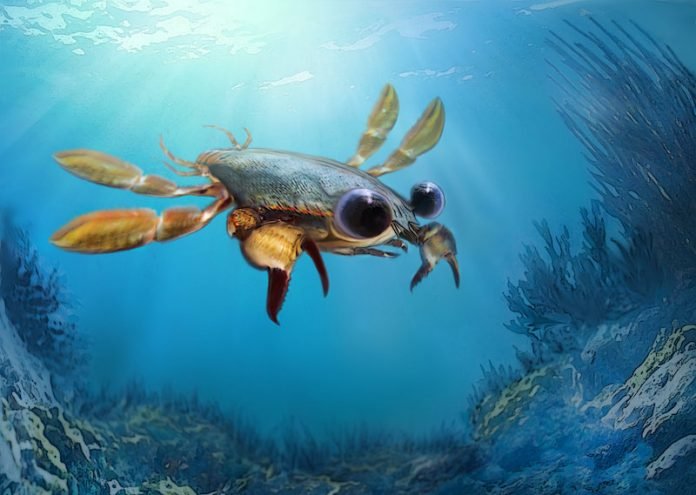
In a new study, scientists have discovered a 95-million-year-old chimera species.
The new discovery suggests that it is time to rethink the definition of a crab.
The research was conducted by An international team of researchers led by Yale University.
In the study, the team discovered very well-preserved specimens from Colombia and the United States.
These specimens can be dated back to the mid-Cretaceous period of 90-95 million years ago.
Among the specimens, there are tiny comma shrimp fossils, several true shrimp, and an entirely new branch of the evolutionary tree for crabs.
The new crab is called Callichimaera perplexa. According to the researchers, it is the earliest example of a swimming arthropod with paddle-like legs since the extinction of sea scorpions more than 250 million years ago.
This creature has an unusual appearance, including small size, long body, large compound eyes, bent claws, leg-like mouthparts, and exposed tail.
The researchers suggest that these features may have been retained and amplified in miniaturized adults via changes in the timing and rates of development.
The process is called heterochrony and may cause the evolution of novel body plans.
The team suggests that this finding shows that not all crabs are big animals with broad carapaces, strong claws, small eyes in long eyestalks, and a small tail tucked under the body.
Callichimaera defies all of these common crab features, and it is time for scientists to rethink the definition of a crab.
The leader of the study is Yale paleontologist Javier Luque.
The study is published in Science Advances.
Copyright © 2019 Knowridge Science Report. All rights reserved.



